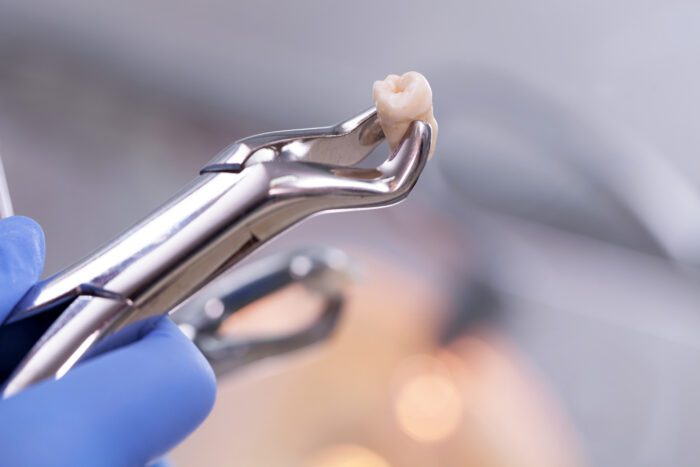A tooth extraction means removing a tooth from its spot in the bone. It can be a simple or surgical process. A simple extraction loosens the tooth with a tool called an elevator, and then the dentist removes it with forceps.
A surgical extraction, however, is more involved and may need a small cut in the gum. The dentist may even have to take out some bone or break the tooth into smaller pieces to remove it. Knowing what type of extraction you’ll have can help you get ready for it.

Preparing for Your Extraction
Before the extraction, talk to your dentist in Silver Spring about your medical history and any medicines you take. Also share any health conditions you have so they can plan the procedure safely. Your dentist may ask you to stop taking certain medicines that might interfere with the extraction.
Follow all pre-extraction instructions from your dentist carefully. Don’t eat or drink for a few hours before your appointment, especially if you’re getting sedation. Make sure to arrange for a ride home, as you may feel a bit tired or lightheaded afterward.
What Happens During the Extraction
To keep you comfortable, the dentist will numb the area around your tooth with a local anesthetic, so you won’t feel pain. You might feel some pressure, but there should be no pain. If you do feel any pain, let your dentist know right away, so they can add more numbing medicine.
For a simple extraction, they’ll loosen the tooth and pull it out. For a surgical extraction, they might need to make a small cut in the gum. Most extractions take less than an hour, though it may take a little longer if it’s a complex case.
Caring for Your Mouth After the Extraction
Right after the extraction, you’ll need to bite down on a gauze pad for 30 to 45 minutes to help stop bleeding. Change the gauze if it gets too soaked. Avoid rinsing your mouth or using a straw for 24 hours, as these can disrupt the blood clot that’s forming and slow down healing.
You can apply an ice pack to your cheek in short 10-minute intervals to help reduce swelling. Take any medications prescribed to manage pain and prevent infection, and follow all your dentist’s care instructions closely.
What to Eat After an Extraction
For the first 24 hours, stick to soft foods to avoid irritating the extraction site. Great choices include yogurt, applesauce, and mashed potatoes. Try to avoid hot, spicy, or crunchy foods that might cause discomfort or knock loose the blood clot.
Drink plenty of water, but avoid alcohol and carbonated drinks. Gradually go back to solid foods as you begin to heal. Following your dentist’s advice on food choices will make the recovery process smoother.
Managing Pain and Discomfort
To ease discomfort, you can take over-the-counter pain relievers like ibuprofen. Follow the dosage instructions to prevent any unwanted effects. Avoid smoking or using tobacco, as these can slow down healing and increase the chance of problems.
Keep your head elevated when sleeping to reduce swelling, using extra pillows for support. If pain doesn’t go away or gets worse, contact your dentist for advice.
Signs of Possible Problems
Watch out for signs of infection, such as fever, severe pain, or swelling that gets worse after a few days. If you notice any of these, contact your dentist immediately.
Another possible issue is dry socket, which happens when the blood clot comes out, exposing the bone and nerves. Symptoms of dry socket include intense pain, a bad taste in your mouth, and bad breath. If you think you might have a dry socket, seek dental care as soon as possible.
Trust Advanced Total Dental Care for Your Extraction Needs
For a safe and successful extraction, consider scheduling your procedure at Advanced Total Dental Care. Our team will guide you through each step, ensuring you feel comfortable and cared for from your first visit to your follow-up appointment. Contact us today to learn more about how we can help with your tooth extraction needs.
